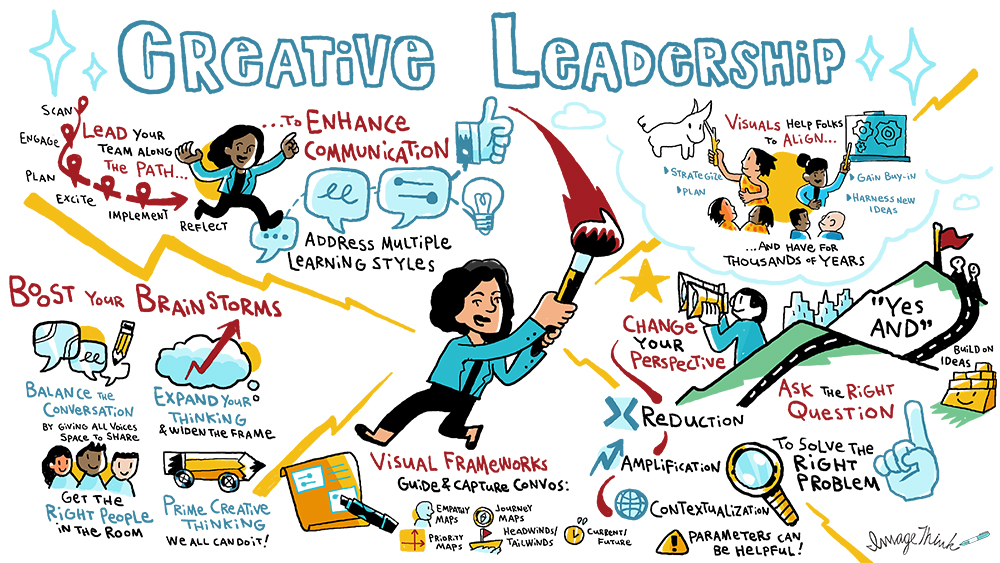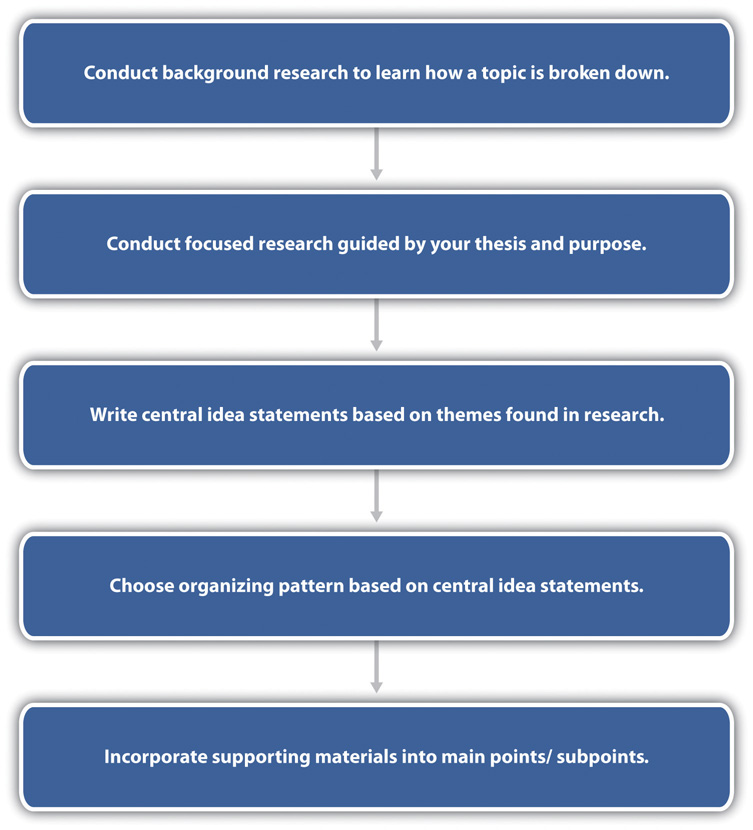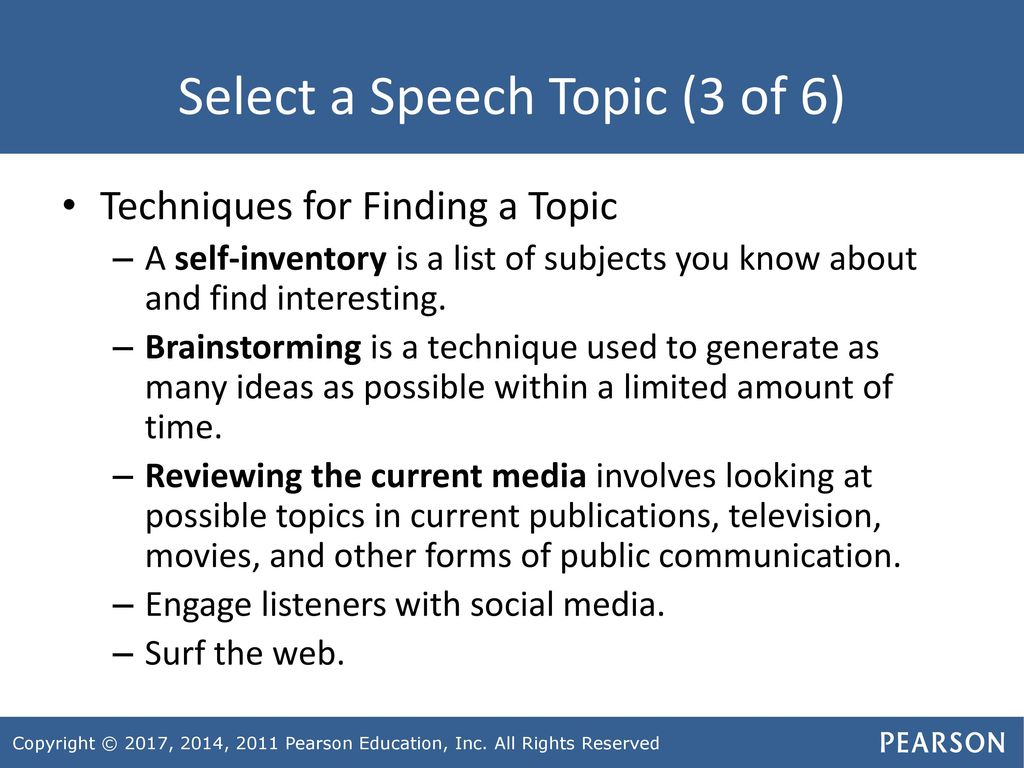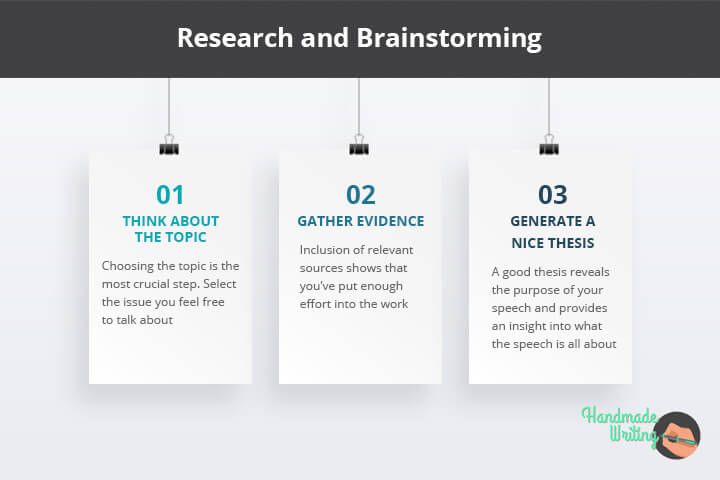what should you remember about brainstorming for a speech topic

Introduction
When it comes to public speaking, selecting the right topic is crucial to delivering a successful speech. Before diving into the speech-making process, it is essential to spend time brainstorming ideas and selecting a topic that not only aligns with your interests but also resonates with your audience. This article will explore the importance of choosing the right speech topic and the benefits of brainstorming for speech topics.
Importance of choosing the right speech topic
Choosing the right speech topic is vital for several reasons. Firstly, selecting a topic that you can research allows you to gather relevant and credible information to support your speech. This ensures that your speech is well-informed and demonstrates your knowledge on the subject. Additionally, connecting the topic to your own interests and the interests of your audience will make your speech more engaging and relatable.
Benefits of brainstorming for speech topics
Brainstorming is a valuable technique to generate ideas for speech topics. It allows you to explore a wide range of possibilities and discover unique angles or perspectives on a subject. By brainstorming, you can uncover topics that are not only interesting but also have the potential to captivate your audience. Brainstorming also helps in narrowing down your options and choosing a topic that aligns with your purpose and can be effectively supported by research.
Overall, selecting the right speech topic through brainstorming is an essential step in the speech-making process. It ensures that your speech is well-researched, interesting, and resonates with your audience, setting you up for a successful and impactful presentation. [1][2][3][4]

Understanding the Brainstorming Technique
Definition and purpose of brainstorming
Brainstorming is a group creativity technique that is commonly used to solve problems and generate ideas. It involves gathering a group of people, either alone or with friends, colleagues, or classmates, to generate a wide range of ideas on a specific topic. The main purpose of brainstorming is to encourage free thinking and creativity, allowing participants to explore various perspectives and possibilities.
How brainstorming helps in generating speech topic ideas
Brainstorming is a valuable technique for generating speech topic ideas because it allows for the exploration of different angles and perspectives. By brainstorming, individuals can tap into their creative thinking and uncover unique topics that are not only interesting but also have the potential to captivate the audience. Additionally, brainstorming helps in narrowing down options and refining ideas into one topic by considering factors such as personal interests, audience relevance, and the availability of research material. This ensures that the selected speech topic is well-informed, engaging, and aligns with the purpose of the presentation.
Overall, understanding and utilizing the brainstorming technique contributes to the success of the speech-making process by aiding in the selection of a well-researched and captivating speech topic. [5][6][7][8]

Preparing for Brainstorming
Creating a suitable environment for brainstorming
To conduct a successful brainstorming session, it is important to create a suitable environment that promotes creativity and open communication. The space should be comfortable, free from distractions, and conducive to free thinking. This can be achieved by selecting a quiet location, ensuring proper lighting, and providing the necessary tools and materials.
Tools and materials needed for effective brainstorming
To facilitate the brainstorming process, it is essential to have the necessary tools and materials. This may include whiteboards or flip charts for visualizing ideas, markers or sticky notes for capturing thoughts, and a timer or clock to keep track of the session's duration. Additionally, providing access to relevant research materials or internet connection can enhance the brainstorming process by allowing participants to gather information and refine their ideas.
By creating a suitable environment and equipping participants with the necessary tools and materials, the brainstorming session can be more productive and efficient in generating speech topic ideas. [9][10][11][12]

Executing the Brainstorming Process
Techniques to stimulate idea generation
During the brainstorming session, it is important to employ techniques that encourage idea generation. Some popular techniques include:
- Mind mapping: This visual technique allows participants to explore connections and relationships between ideas.
- Free writing: Participants jot down any and all ideas that come to mind without judgment or critique.
- Rolestorming: Participants adopt different roles or perspectives to view the problem from a fresh angle.
- SCAMPER: This acronym stands for Substitute, Combine, Adapt, Modify, Put to Another Use, Eliminate, and Rearrange. It prompts participants to ask questions and stimulate creative thinking.
Encouraging participation and collaboration during brainstorming
To ensure active participation and collaboration during the brainstorming session, it is important to establish ground rules and create a safe and non-judgmental environment. Some ways to encourage participation include:
- Setting a time limit for each idea to keep the session focused and prevent dominant voices from overshadowing others.
- Using a round-robin approach, where each participant takes turns sharing an idea without interruption or criticism.
- Encouraging all participants to build on each other's ideas, leading to a more collaborative and innovative atmosphere.
Through effective techniques and encouraging participation and collaboration, the brainstorming session can yield valuable and creative ideas. [13][14][15][16]

Analyzing and Refining Ideas
Evaluating the feasibility and relevance of generated speech topic ideas
During the brainstorming session, it is crucial to evaluate the feasibility and relevance of the generated speech topic ideas. Consider the following factors when analyzing the ideas:
- Feasibility: Determine if the topic is within the scope of your knowledge and expertise. Can you thoroughly research and provide valuable information on the topic?
- Relevance: Assess how the topic aligns with your audience's interests and needs. Will it engage and resonate with them?
Selecting the most promising speech topics
After evaluating the generated ideas, select the most promising speech topics that meet the following criteria:
- Alignment with your passion: Choose a topic that you are truly passionate about and can speak about with enthusiasm. This will help you connect with your audience on a deeper level.
- Audience appeal: Consider the relevance and impact the topic will have on your audience. Will it provide value and address their interests or challenges?
- Uniqueness: Select a topic that offers a fresh perspective or presents unique insights. This will make your speech stand out and capture your audience's attention.
By carefully analyzing and refining the ideas, you can choose a great topic for your speech that will engage your audience and leave a lasting impact. [17][18][19][20]

Brainstorming for Narrowing Down Choices
Limiting the options to two or three choices
During the brainstorming process, it is essential to generate a wide range of topic ideas. However, as you progress, it becomes crucial to narrow down your choices to two or three options. This helps in focusing your research and presentation efforts, ensuring a more concise and impactful speech.
Considering various factors in the decision-making process
When selecting the final options from the brainstormed ideas, it is important to consider several factors:
Feasibility: Evaluate if you have sufficient knowledge and expertise to thoroughly research and provide valuable information on the topic.
Relevance: Assess the alignment between the topic and your audience's interests and needs. A relevant topic will engage and resonate with them.
Passion and audience appeal: Choose a topic that you are passionate about, as this will enable you to speak with enthusiasm and connect with your audience effectively.
Uniqueness: Select a topic that offers a fresh perspective or unique insights. This will make your speech stand out and captivate your audience's attention.
By carefully considering these factors, you can confidently choose a compelling speech topic that will engage your audience and leave a lasting impact. [21][22][23][24]

Documenting and Organizing Ideas
Transferring brainstormed ideas onto paper or other mediums
When you have completed the brainstorming process and narrowed down your topic options, it is important to document your ideas. This can be done by transferring them onto paper or using other mediums such as digital note-taking applications or brainstorming tools. By documenting your ideas, you ensure that they are captured and can be referred back to throughout the speech preparation process.
Structuring and categorizing the speech topic ideas
Once you have documented your brainstormed ideas, it is time to structure and categorize them. This helps you to organize and make sense of the various topic options. Consider grouping similar ideas together or organizing them based on themes or subtopics. Creating a visual representation, such as a mind map or an outline, can also aid in structuring and categorizing your ideas effectively.
By documenting and organizing your ideas, you establish a clear foundation for developing your speech. This process allows you to better analyze and evaluate the feasibility, relevance, passion, and uniqueness of each topic option. It also enables you to identify any gaps or overlaps in your ideas, ensuring a well-rounded and logically structured speech. [25][26][27][28]

Finalizing the Speech Topic
Reviewing and polishing the chosen speech topic
After documenting and organizing your ideas, it is important to review and polish the chosen speech topic. Take a step back and critically evaluate each potential topic based on its strengths and weaknesses. Consider factors such as your knowledge and expertise on the subject, the potential for engaging the audience, and the availability of credible sources to support your arguments. Revise and refine the chosen topic as needed to ensure it aligns with your interests and capabilities as a speaker.
Ensuring the selected topic aligns with the speech objective and audience
Another crucial step in finalizing the speech topic is to ensure that it aligns with the speech objective and audience. Consider the purpose of your speech and what you aim to achieve through your presentation. Also, consider the demographic and interests of your audience. Choose a topic that resonates with both your speech objective and your audience's needs and preferences. By selecting a topic that is relevant and meaningful to the audience, you increase the likelihood of capturing their attention and delivering a compelling speech. [29][30][31][32]

Finalizing the Speech Topic
Reviewing and Polishing the Chosen Speech Topic
After documenting and organizing their ideas, speakers should take a step back and critically evaluate each potential topic. This entails considering factors such as their knowledge and expertise on the subject, the potential for engaging the audience, and the availability of credible sources. Speakers should revise and refine the chosen topic as needed to ensure it aligns with their interests and capabilities.
Ensuring the Selected Topic Aligns with the Speech Objective and Audience
Another crucial step in finalizing the speech topic is to ensure it aligns with the speech objective and audience. Speakers must consider the purpose of their speech and what they aim to achieve through their presentation. It is also important to take into account the demographic and interests of the audience. By choosing a topic that is relevant and meaningful to both the speech objective and the audience's needs and preferences, speakers increase the likelihood of capturing their attention and delivering a compelling speech.
Conclusion
Recap of the Importance and Benefits of Brainstorming for Speech Topics
In summary, brainstorming is a valuable tool for speakers to solidify their speech topics. It allows for the unlocking of creativity through collaboration and helps in generating a variety of ideas. By engaging in brainstorming, speakers gain a broader perspective and increase their chances of selecting a compelling topic that resonates with both their interests and the needs of their audience.
Encouragement to Implement Brainstorming Techniques for Future Speeches
Speakers are encouraged to continue utilizing brainstorming techniques for future speeches. By involving others in the brainstorming process, whether friends, colleagues, or classmates, speakers can benefit from different perspectives and insights. Additionally, experimenting with different brainstorming exercises such as word association can lead to unique and innovative speech topics. Through ongoing practice of brainstorming, speakers can enhance their ability to develop engaging and impactful speech topics that add value to their audience's knowledge. [33][34][35][36]

